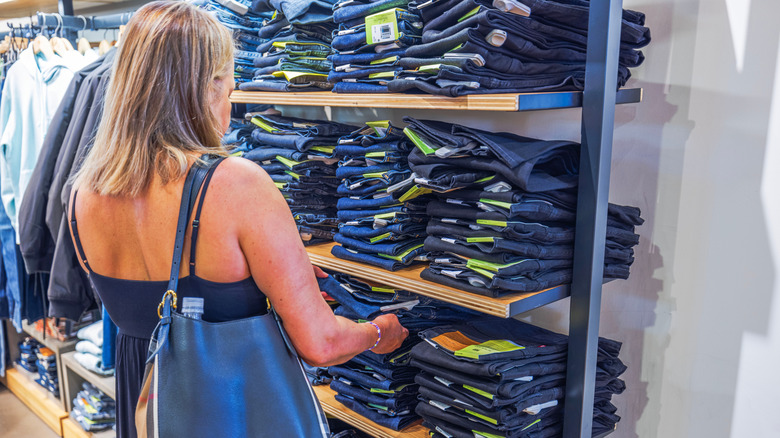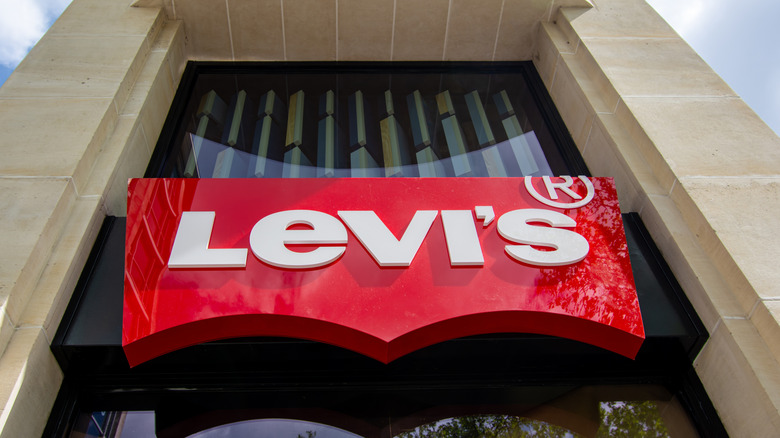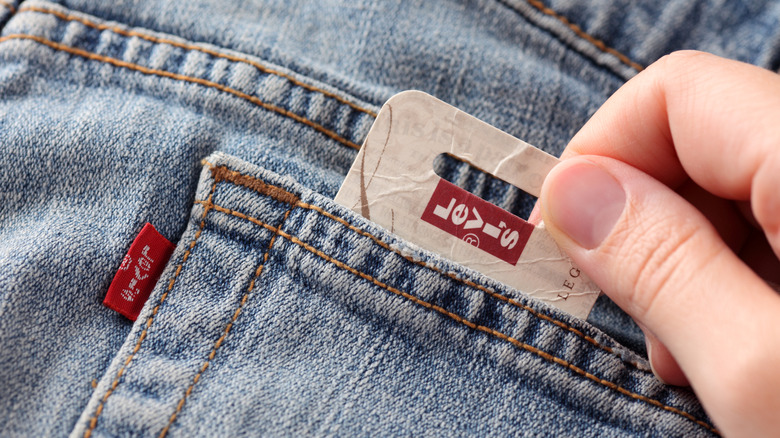The Iconic American Jean Company That's Actually Made In China And Beyond
Levi Strauss opened his wholesale fabric-and-clothing store in San Francisco in 1853 and, along with tailor Jacob Davis, patented riveted work pants on May 20, 1873. These became the first 501® blue jeans, designed to be strong enough for gold miners. For more than a century, Levi's made its jeans in North America, but that changed in 2004.
In a filing with the SEC, the company said it had shut down its last sewing and finishing plants in San Antonio in January 2004, followed by its final three factories in Canada two months later. Mass production then moved overseas. In 2025, Levi Strauss uses suppliers from around the world for most of its products. However, it still puts out limited "Made in the USA" releases, like 501® Originals sewn in Los Angeles, keeping a small amount of U.S. production alive even though large-scale manufacturing in North America has ended.
Company spokeswoman Linda Butler told the Los Angeles Times when the last U.S. plants shut in 2003 that the move was part of a shift away from making clothes themselves and toward focusing on branding and product design. According to its 2024 annual report, the company now works with suppliers in about 28 countries across Asia, the Americas, Europe, and Africa. On Levi Strauss's website, an interactive map shows active factories in places like China, Bangladesh, Vietnam, Mexico, Pakistan, and Egypt.
Over 500 factories in more than 40 countries
Levi Strauss's supplier map shows how much of its production happens outside the United States. Its 2021 sustainability report said the company was working with over 500 contractor factories across about 40 countries. A more recent 2024 UK Modern Slavery Statement narrows that number to 34 countries, but still makes it clear that nearly all manufacturing takes place overseas. Levi Strauss's Form 10-K filed 26 November 2023 says it works with independent contractors in about 32 countries to make its clothes and accessories, and no single country provides more than 30% of its supply.
According to the company's 2024 Climate Transition Plan, about 80% of those items are made in Asia, with the rest coming from partners in Mexico, Brazil, Egypt, Turkey, and parts of Africa. The company's public supplier map, which is updated every quarter, shows where these factories are located, with many grouped around cities like Ho Chi Minh City, Dhaka, and Cairo. These are the places where Levi's main products, like 501® jeans and trucker jackets, are made. For shoppers, know that almost every red-tab pair of Levi's you buy in the U.S. is made overseas, and a 2019 SEC filing puts the figure at 99%. But Levi's is not the only United States brand with ties outside the country. For instance, Waldorf Astoria and GE Appliances are both U.S brands owned by China. In fact, China has ties to one of America's biggest food companies.
The limited and costly exceptions
Levi's still offers a few "Made in USA" items, but these are limited releases, not mass production. One example is the tribute to Cone Mills' White Oak selvedge plant in Greensboro, North Carolina. For that drop, Levi's Vintage Clothing made just 150 pairs of 1955-style 501 jeans and 150 Type II jackets. Each piece was made from the mill and came with a numbered tag to mark its place in the series.
Because the supply is so small, the prices are high. Industry site Heddels reported that the White Oak tribute pieces launched at $600 each. Levi's usually limits special editions to 501 pieces, so this drop of just 150 jeans and 150 jackets was even more limited. Now, the price of the White Oak jeans and jackets are going up. On eBay, a never-worn pair of 1955 501® jeans from Levi's Vintage Clothing is listed at $1,289. Another pair from a limited 1901 White Oak edition is going for $909. On Grailed, a seller has a Unreleased Off-White x Levi's Jacket listed at $750, marked down from $850. The only other jeans Levi's still makes in the U.S. come from its custom Lot 1 program and tailors in just five cities; San Francisco, New York, London, Paris, and Tokyo, create each pair by hand. Appointments begin at around €795 (about $925.48 as of now July 2025), and the process takes weeks, so only a small number are made.


